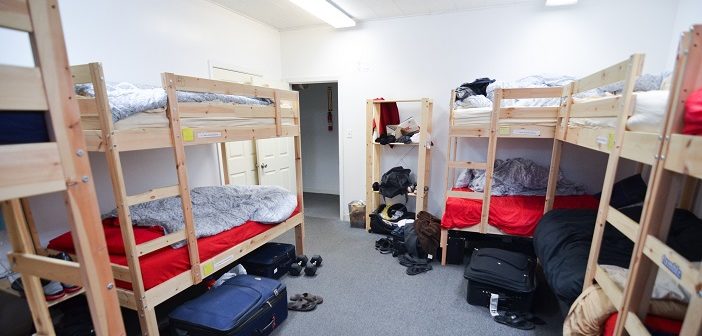Title Page
-
Assembly Site:
-
Please select your DEPARTMENT:
- Attendants Department
- Audio / Video Department
- Parking Department
- Cleaning Department
- Stage & Installation Department
- First Aid Department
-
Select below Audit Round:
-
Conducted on
-
Prepared by
-
Location
Instructions
-
1. The department overseer and his assistant overseer will personally conduct an audit at least one day before the assembly. If in any case, the overseer or his assistant is unable to perform this audit, another qualified elder may be used to perform the audit.
2. The auditor/s must go through each and every safety item on the list, verify the potential safety issue and check the appropriate box.
3. Should there be any potential safety hazards identified during the audit, a recommendation must be added in the 'Add Action' button with a corresponding owner who will be assigned to execute the recommended action item (you can add notes and pictures as needed). Each action item must be performed before the assembly or convention starts.
4. Once all recommendations have been completed, a final audit must be conducted for compliance. After the final audit has been done and the corrective actions have been completed and verified, this completed checklist shall be submitted to the Assembly Overseer or to the Assistant Assembly Overseer for filing.
-
Please select your DEPARTMENT to run the Safety Checklist Audit:
- Attendants Department
- Audio / Video Department
- Parking Department
- Cleaning Department
- Stage & Installation Department
- First Aid Department
-
Site Plan – Exit Signs are in place and are clearly visible?
-
Emergency Evacuation Procedures Properly Documented?
-
Site assessment / Inspection done to identify areas / objects / processes that are potential safety hazards?
-
Site assessment / Inspection done to identify areas that are potentially unsafe for children or elderly?
-
Adequate fire extinguishers are identified and clearly signed?
-
Event emergency plan properly documented and communicated to all attendant volunteer (including method of communication in the event of an emergency)?
-
Emergency Exits and Assembly areas are clearly and adequately signed?
-
Any restricted entry areas are adequately signed and secured?
-
Equipment installed according to manufacturer’s guidelines?
-
All free standing objects (Speakers, Projectors, Screens, TV Monitors, etc) are weighted and/or properly secured?
-
Guidelines properly documented and communicated to all Audio / Video department volunteers?
-
All portable electrical equipment/tools, leads and power boards tested and tagged as required?
-
Appropriate rating / size cables, extension cords, electrical wires, insulators, used and are compliant to building electrical load limits?
-
No daisy chaining of extension cords and power boards?
-
Lead connections etc are protected from weather or any other liquid?
-
All lead / connections are properly secured?
-
Leads / Cables are not placed across thoroughfares?
-
Cable covers / ramps properly installed and are secured?
-
Qualified / approved Electrician used for electrical set-up?
-
Qualified / Experienced technicians used for equipment assembly?
-
Generators, if used, safely positioned and access to area restricted – location approved by Fire Safety advisor?
-
Communication devices, Audio and Video equipment are properly inspected for potential fire hazard (faulty batteries, faulty chargers, dilapidated devices, exposed wires, etc)?
-
Area is restricted to essential personnel and is adequately signed?
-
All volunteers involved in Manual Handling<br>/ Heavy lifting have received appropriate training?<br>
-
Trolleys available for the movement of heavy items?
-
Traffic Management Plan properly documented and communicated to all Parking and Traffic volunteers?
-
Signs for Speed limits are adequate and clearly visible?
-
All Traffic Management Volunteers are wearing high visibility vests?
-
Adequate parking facilities for people with disabilities?
-
Pedestrian lanes and access identified and adequately signed / secured?
-
Provision of access for emergency vehicles and personnel?
-
Emergency Plan properly documented and communicated with all Parking volunteers (including the method of communication in the event that an emergency occurs)?
-
Appropriate cleaning tools / equipment are used during pre-event cleaning?
-
Cleaning volunteers under the age of 16 years are properly accompanied and /or supervised by his/her guardian or another qualified adult?
-
All cleaning materials, including cleaning agents / chemicals are verified safe for use and are properly labeled?
-
Appropriate safety gloves, safety goggles/glasses, face mask, apparel, etc are available and are used according to task requirement?
-
Adequate waste bins are available and are being used properly?
-
Adequate warning signage are in place for areas that needs to be restricted?
-
Adequate water and washing facilities available (not only for cleaning but for medical use case of an emergency)?
-
Cleaning procedures and safety guidelines are properly communicated?
-
If stage construction is needed – is the structure sound and secured?
-
Seating plan available and arrangement of chairs are compliant to Fire Safety Rules (Adequate spacing between rows, Adequate number of aisles, etc)?
-
If access to the stage require stairs – are the staircase structures sound and secured and adequate hand rails (or equivalent) are present?
-
Are the areas in and around the stage free from tripping hazards (loose carpets, cables, cords, loose boards, etc)?
-
Are all furniture, Free standing objects, Hanging objects and other forms of stage paraphernalia properly weighed down and / or secured?
-
Is there a clear and unobstructed path to emergency exists in the event that an emergency occurs?
-
Are all volunteers equipped with safety tools and materials (Eye protection, Working Gloves, Body Harness, and Safety shoes, Safety Helmet, Face mask, etc) where required during installation?
-
Are all equipment and tools used (Ladders, Ropes, Tables, Cutters, Power tools, etc ) are appropriate for the task and are duly inspected to be free of any and all kinds of defects, deformities and safety hazards?
-
If using external or internal contractors<br>– are all workers using qualified equipment and / or materials free of any and all kinds of defects, deformities and safety hazards?
-
Chairs are clean and free of defects that would make it unsafe to use (back rest secured, no cracks on seat, legs are sound and stable, No protruding objects, etc)?
-
All Access and Exit points are safe and free of any and all kinds of obstructions?
-
First aid equipment / Materials and medical supplies are readily available and are properly labeled and stored?
-
Adequate signage are in place and are clearly visible?
-
Medical Supplies (pain relievers, bandages, disinfectants, feminine hygiene items, etc) and other items used for minor medical needs are inspected and any product with an expiring “Use by” date are properly discarded?
-
No prescription drugs are present in and around the First Aid Department area?
-
All used Medical Supplies (wrappers, blisters, syringes, needles, cotton balls, cotton swabs, gloves, face masks, etc) are properly discarded and / or kept away from unauthorized access?
-
First aid department has clear and unobstructed access to an emergency exit where an emergency vehicle is ready to depart should an emergency occurs requiring transport to the nearest hospital?
-
All chairs, cots or beds, tables, drawers, etc are inspected and are free of defects or damage that would render it unsafe for use?
-
All free standing objects (Oxygen tanks, IV Stands or poles, CPR equipment stands, etc) are properly weighed down and / or secured?
-
First aid area is kept clean and neat at all times?
-
Standard protection is on hand for treatment of communicable diseases?
-
Waste disposal bins are available and are clearly labeled?
-
First aid Log Book is readily available?













